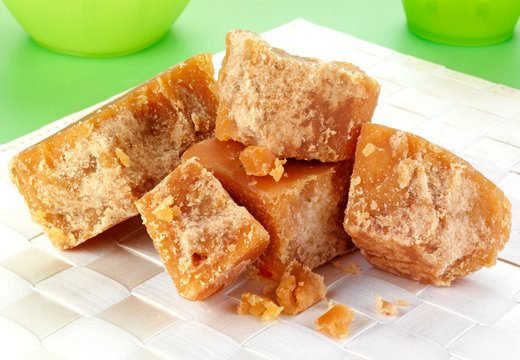Deciphering the Sweetness: Jaggery vs Sugar Compared

In the realm of sweeteners, two common options often come into the spotlight: jaggery vs sugar. These sweeteners have been integral to cuisines around the world for centuries. Let’s delve into their differences to understand their composition, nutritional value, health benefits, and more.
II. Composition
A. Jaggery
Jaggery, also known as “gur” in some regions, is a traditional non-centrifugal sugar consumed in Asia, Africa, and Latin America. It’s made by boiling sugarcane juice or palm sap in traditional processing methods.
B. Sugar
Sugar, on the other hand, is primarily extracted from sugarcane or sugar beets. The refining process involves extracting the juice, clarifying it, concentrating it into syrup, and crystallizing it into granules.
III. Processing Methods
A. Jaggery Production Process
The production of jaggery involves boiling sugarcane juice or palm sap until it solidifies. This process retains more of the natural molasses and minerals present in the raw material.
B. Sugar Refining Process
Sugar undergoes a rigorous refining process, including multiple stages of filtration, crystallization, and drying. This process removes impurities and concentrates the sucrose content.
IV. Nutritional Comparison
A. Calories and Carbohydrates
Jaggery contains about 383 calories per 100 grams, while sugar contains around 387 calories. However, jaggery has a higher carbohydrate content due to its molasses content.
B. Minerals and Vitamins
Jaggery retains some minerals like iron, calcium, and potassium, whereas refined sugar lacks these nutrients.
C. Glycemic Index
Jaggery typically has a lower glycemic index compared to sugar, meaning it causes a slower and steadier rise in blood sugar levels.
V. Health Benefits
A. Jaggery
Jaggery is believed to have various health benefits, including aiding digestion, boosting immunity, and providing relief from respiratory issues.
B. Sugar
While sugar provides quick energy, excessive consumption is associated with health issues such as obesity, diabetes, and dental problems.
VI. Drawbacks
A. Jaggery
Despite its nutritional benefits, jaggery is still high in calories and should be consumed in moderation, especially for individuals watching their weight or blood sugar levels.
B. Sugar
Refined sugar lacks essential nutrients and may contribute to weight gain and other health problems when consumed in excess.
VII. Culinary Uses
A. Jaggery
Jaggery is commonly used in traditional desserts, beverages, and savory dishes, imparting a distinct flavor and aroma.
B. Sugar
Sugar is a versatile sweetener used in a wide range of culinary applications, from baking and cooking to sweetening beverages.
VIII. Environmental Impact
The production of both jaggery and sugar can have environmental implications, including deforestation, water usage, and pollution from processing plants.
IX. Price and Availability
The availability and pricing of jaggery and sugar vary depending on factors such as geographical location, production methods, and market demand.
X. Consumer Preference
Consumer preferences for jaggery or sugar can be influenced by cultural factors, taste preferences, health considerations, and availability.
XI. Conclusion
In the jaggery vs sugar debate, both sweeteners have their pros and cons. While jaggery offers some nutritional benefits and a distinct flavor profile, sugar provides versatility and sweetness. Ultimately, moderation and mindful consumption are key to enjoying these sweeteners while maintaining a balanced diet.




